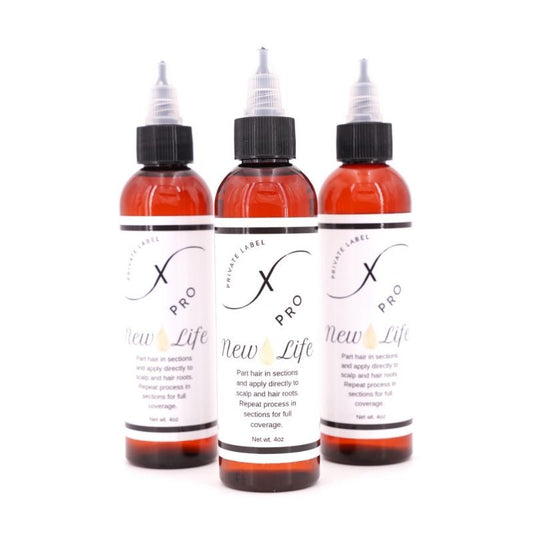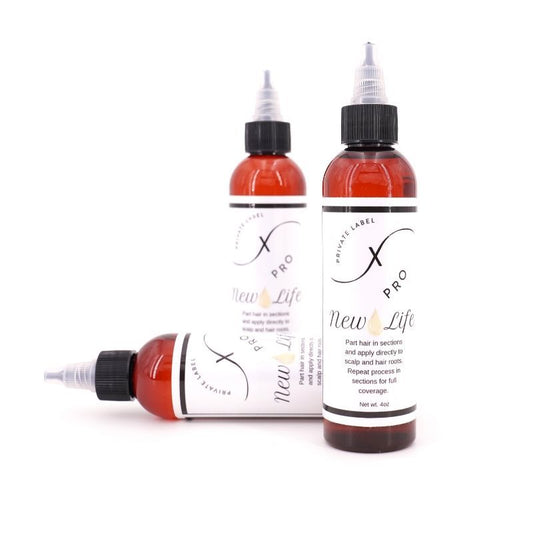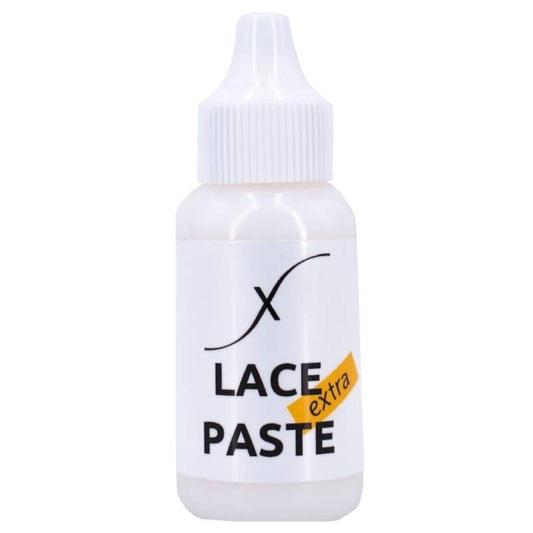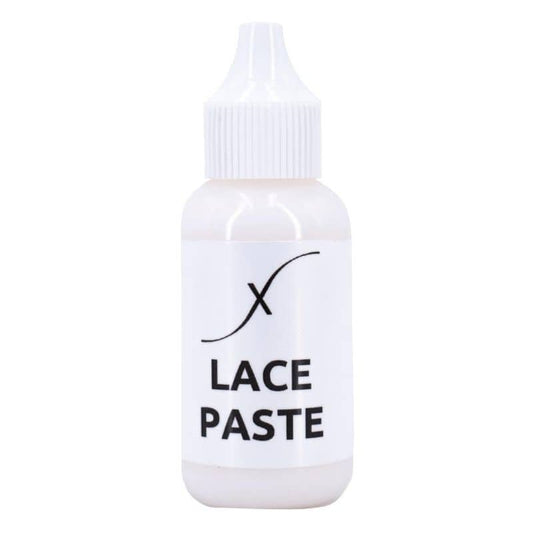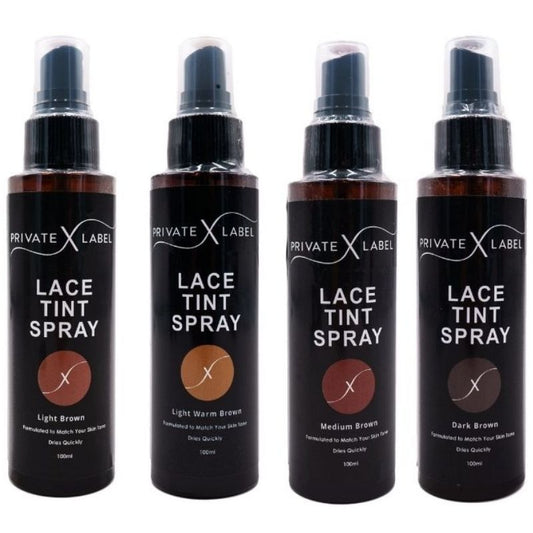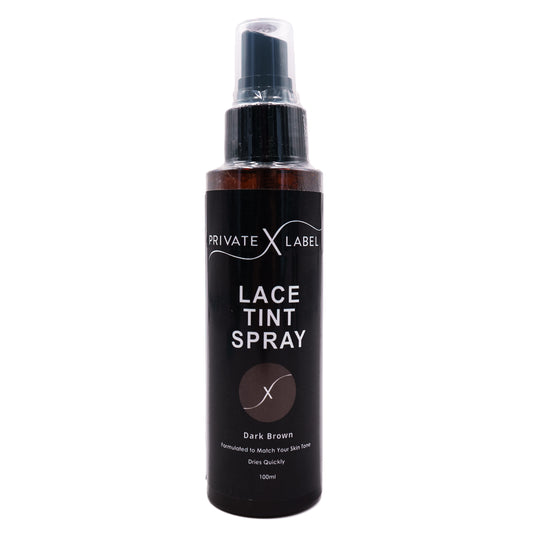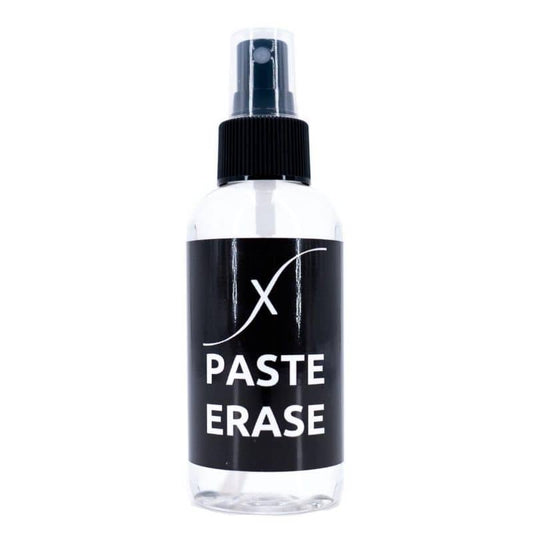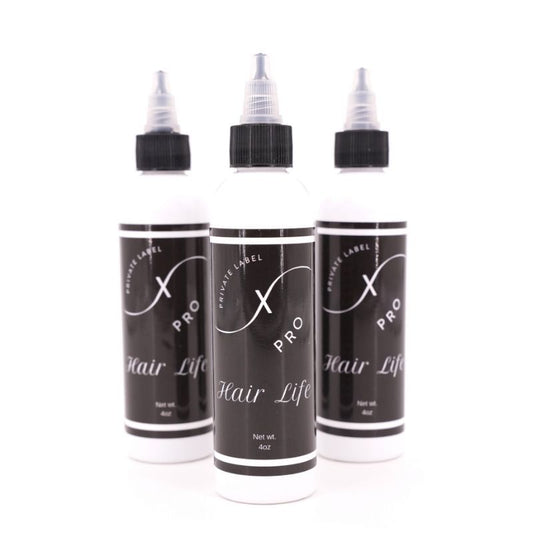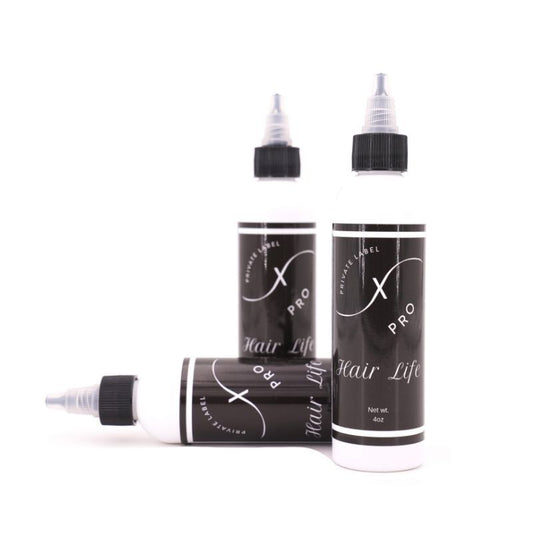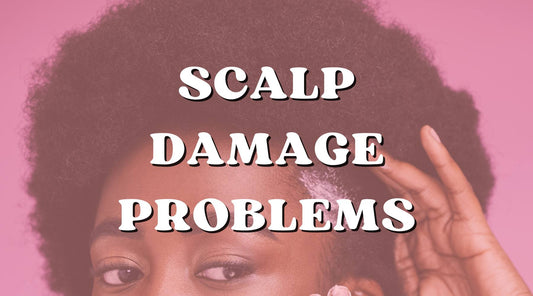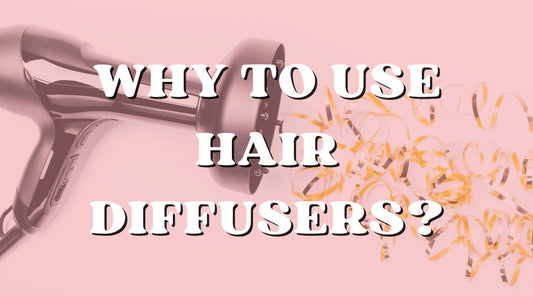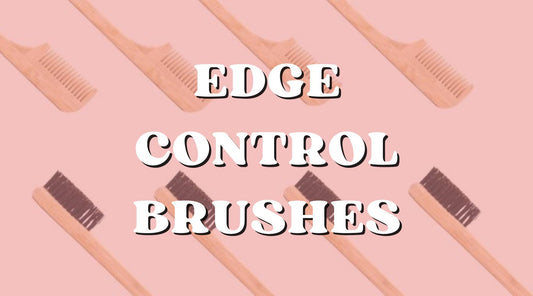1260 Memorial Drive
Atlanta, Georgia 30316
404-458-1330
Scalp Damage, How Bad Is It?
Mikey MoranOkay, I'm about to be extremely transparent with you all and share my scary experience with dermatitis.
I change my hairstyle quite often, and I love my wigs! My dandruff started to get out of hand, and like most of you, I have been trying to figure out a good hair care routine that will end my battle with embarrassing white flakes.
Then, one night, I looked in the mirror, and I saw crusty flakes that had basically taken over my entire hairline. 😞
I figured it must be the lace wigs, so I decided to stop wearing them. I then started using Sulfur 8 shampoo because it is recommended to help with dry, itchy scalps.
My hairline is a whole lot better, and I don't have dandruff nearly as bad anymore. When I visited my dermatologist, I was diagnosed with dermatitis and was given a shampoo to use.
Don't think you're alone when it comes to scalp conditions. I know they can be extremely embarrassing, but with an understanding of what is going on with your scalp, as well as a consistent hair care routine, you will be fine.
I mention scalp conditions because a lot of scalp damage comes from us ignoring signs and symptoms of pre-existing issues.
Then, when you put in extensions or weaves, braids, or even wigs, you may notice even more serious issues. So you aim for medical wigs.
If ignored, conditions such as dermatitis can lead to hair loss as well as irreversible baldness.
In this article, I am going to share some of the pre-existing conditions that can lead to scalp damage.
I also will share some solutions to help you start loving yourself and your hair all over again. So, you know what to do!
Let's turn up our Cardi B playlist and get rid of this itchy mess!

Conditions That Lead to Scalp Damage
Eczema or Seborrheic Dermatitis
These two terms are often used interchangeably.
This skin condition is redness and itching on the scalp. It's thick and dry with large, flaky scales.
You can suffer from redness, heat, pain, and inflammation, especially during seasonal changes. If you are constantly scratching your scalp and/or you have some flakiness, you may have it.
Your dry and itchy scalp may be eczema. You may notice that you suffer a lot of breakage and hair loss in areas where the eczema is present. It seems to be most prevalent in the nape area and the back of your neck.
Flakiness, itchiness, redness, and extreme flare-ups. Heat and perspiration can cause outbreaks as well.
Some people go to a doctor to get a prescription for eczema, and there are some home remedies you can use.
Use cold water to shampoo and rinse your hair. Hot water will only intensify the symptoms.
Factors that can cause a flare-up are stress and your diet. Make sure you keep your routine simple and reduce the number of products you use on your scalp.
Solutions:
Raw unfiltered apple cider vinegar scalp rinse is a great product for your scalp because it seals your hair's cuticles, has fantastic antibacterial and antifungal properties, and balances the pH of your hair and scalp.
Make sure you use an ACV diluted to 5% acidity.
Step #1
Mix one cup of distilled water with two tablespoons of apple cider vinegar in a spray bottle.
Step #2
Shake the bottle to mix well.
Step #3
Part your hair and press the saturated paper towel on your scalp.
Step #4
Once you have treated your scalp, put on a shower cap.
Step #5
Leave the shower cap on for about 30 minutes.
Step #6
Shampoo your hair with a sulfate-free product that has peppermint in it (it soothes the scalp).
Step #7
Rinse your hair with cold water and apply a leave-in conditioner.
Some other options are below:
- Put a few drops of tea tree oil on your scalp before going to bed
- Apply castor oil sparingly, and massage it into your scalp
- Apply coconut oil and massage into your scalp
- Purchase Entwine Couture Detox & Grow Cleanser, which has great reviews
- Do not use apple cider vinegar too often. It does dry your hair out if you use it too often.

Folliculitis
Folliculitis can cause hair loss. It is an infection of the scalp, which is accompanied by itching and soreness.
Hair loss occurs because it affects the hair follicles as well as your scalp. Due to it affecting the scalp, you will notice spots on it that resemble acne bumps.
The bumps will be red and inflamed around the base of the hair follicle. Remember, the hair follicle regulates hair growth and is the sheath of cells that surrounds the root of hair.
Therefore, as folliculitis gets worse, the hair will fall out, or even in more severe cases, the hair follicle will be destroyed, resulting in bald spots.
Swimming in water improperly chlorinated can cause folliculitis.
Although folliculitis is not contagious, be careful of close skin-to-skin contact and sharing of items such as brushes or combs.
Solutions:
Tip #1
Shampoo your hair with a shampoo which contains ketoconazole.
Tip #2
Use a topical antibiotic, which can be purchased at your local drugstore or Walmart.
Tip #3
If you have a more severe case, see a doctor to get an antibiotic or antifungal prescription.
Tip #4
Do not share razors.
Tip #5
Maintain good skin hygiene.
If it does not resolve, see a doctor!
If you confirmed a medical condition, aim for a Fine Mono Medical Wig.

Dandruff
This scalp condition is very common.
Normally, the skin replaces itself by shedding dandruff, which is the flaking of the skin; red patches, greasy patches, and itchiness are symptoms you may experience.
Seborrheic dermatitis is a more severe form of dandruff. Dandruff can be worse during the winter time due to the cold and dry weather.
As the skin layers continually replace themselves, the old cells die and flake off, which is about a month process.
When dandruff occurs, it is because the cell turnover happens too rapidly, which happens about every seven days.
Therefore, the dead skin cells present as large clumps which are gray or white in color.
Causes of dandruff can be:
- Fungus
- Dry and cold weather
- Dry Hair
Solutions:
Step #1
Keep a balanced, regular diet.
Step #2
Massage oil into your scalp.
Step #3
Keep bedding clean by washing once per month and replacing towels often.
Step #4
Keep your scalp clean by shampooing your hair, preferably at night.
Step #5
Select a deep cleansing and mild shampoo.
Step #6
Rub your shampoo in your palms and then massage it onto your scalp using your fingertips.
Step #7
Wash all of the shampoo out of your hair.
Step #8
Rinse your hair with cool or cold water.
Step #9
Dry hair completely.
Step #10
Don't place your hair dryer directly on your scalp.

Fungal Infection
If you notice any type of black dots on your scalp, it is more than likely a fungus.
The black dots are actually broken-off hair follicles.
Another sign of a fungal infection is boils that form on the scalp.
Usually, these boils form after infected scalp lesions have gone untreated.
Solutions:
Tip #1
Take prescribed medication for the entire duration per your physician.
Tip #2
Apply a cream or other topical medication as prescribed.
Tip #3
Have a physician correctly diagnose you to ensure it's not another health-related issue.

Damage Caused by Weaves and Extensions
Weaves and hair extensions can make a current scalp condition worse.
The conditions I share above Are some of the conditions that can really irritate the scalp and cause a client or yourself some extreme issues.
I recommend that you get your scalp conditions under control before you actually install any kind of weave or extensions.
Remember, the scalp is going to be covered by the extension or the lace wig, which makes it difficult for the scalp to breathe the way that it needs to.
Also, the natural shedding of the old skin cells on the scalp will be limited because of the net or cap that covers the scalp and natural hair.
Improperly Installed In Extensions
Scalp damage can occur when a weave or extensions are installed improperly.
There are some telltale signs that your extensions are not incorrect:
- Pulling or tugging due to sew-in being sewn in too tight.
- Any pain during or after installation.
- Loose wefts.
- Buckling wefts.
- Braids falling out with hair follicles attached.

Hairline Alopecia
Alopecia is the loss of hair.
Most of the time, alopecia occurs when you either have braids that are pulling really tightly on your hairline, or you have a tight sew-in that is doing the same thing.
You've seen all of these liquid drops that have been created to help you grow your edges back.
But if you take the right precautions in the beginning, you won't have to worry about your thinning edges.
Even if you're someone who really likes to rock your sew-in weaves, even wigs or braids, it is always a good idea to just let your hair breathe every now and then.
So, in between styles, give your hair a break, wear it out where it is in its natural state, and allow your hairline to rest.
This type of hair loss is considered traction alopecia. Another reason for a thinning or bald hairline is the use of glue to keep wigs on.
We all love our lace glue and tape to keep them in place. Repeated use of adhesives can pull your hair and can cause irritation.
Blisters, bumps, and rashes are common. Remember, any irritation to the hair follicle can lead to hair loss.
Although there are symptoms that may be apparent signs and symptoms of scalp irritation, there are times when you may not notice any change.
Solutions:
- Change hairstylist if your stylist is not educating you nor addressing the issue.
- See a physician to get correctly diagnosed and treated.
- Communicate with your hairstylist on styling options.
- Sewing wefts onto braids to reduce tension on the scalp.
- Use lace glue skin prep.
- Use a cap to protect your scalp from glue.

Scalp Damage Caused by Relaxers
I haven't used a relaxer in almost a year, and I can tell you I don't miss the burning scalp nor the scabs visible once I rinse my relaxer out.
I hear my hairstylists rebuking me right now and telling me all the things I did wrong, but you know I'm hardheaded.
Relaxers, whether lye-based or not, can burn your scalp. You can experience pain, redness, and oozing from the scalp.
Relaxers can cause chemical burns due to the following reasons:
- Manipulation of the scalp or hair follicles before relaxing your hair.
- Manipulation of the scalp while the relaxer is on your hair.
- Applying the relaxer to your scalp versus your new growth.
- Leaving the relaxer on longer than recommended.
- An adverse reaction to the relaxer.
- Applying relaxer to hair where your scalp already has a condition that needs treatment.
Solutions:
Apply aloe vera gel to your scalp using the following process:
Step #1
Part your hair into four sections.
Step #2
Apply the gel to your scalp.
Step #3
Your scalp will tingle due to the chemical burn.
Step #4
Put a bonnet on your hair.
Step #5
Continue to apply as your scalp heals.
Apply coconut oil to your scalp:
Step #1
Repeat the same procedure for the aloe vera.
Step #2
The coconut oil will soften any scabs on your scalp.
Step #3
Continue to apply as your scalp heals.

Pay Attention and Take Care of Your Scalp
Look, there's nothing cute about having to take pain pills after a sew-in, braids, or gypsy braids.
I know we may laugh about it, but seriously, if you have to do that, you will need to get a new stylist.
Getting a cute style is one thing, but losing hair is a price no one should ever want to pay.
No one wants to deal with hair loss or permanent bald spots. You should take care of your scalp and hair just like you do your body.
It starts with you realizing what does and does not work on your scalp.
Health and medications can play a huge part in the way your skin reacts to stress or manipulation. 👍🏿
Comment below with any questions, or share your story about your scalp damage.
Here at PLE, we appreciate your support and always seek to give you valuable information you can use in your daily life.

